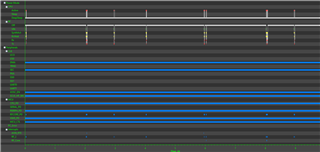Hi
we are able to communicate with our LPSTK and collector in proprietary Rf (Tx)protocols along with the accelerometer. And the current consumption is also fine for us..
since the OAD is concern we would like to go with the Ti-15.4 stack instead of proprietary protocols. Below points are need suggestion from an expert end..
1.15.4 stack is taking 3ma in idle mode and 15ma while transmitting (whereas as proprietary rf takes only few micro amps and 1ma while sending )
2.since our project is cattle health monitor and every time cattles go out of the range and the connection establishing is takes time and sometime manually we have to restart(in proprietary Tx it is broadcasting so that no need to worry about the connection establishing)
3.is it possible to test the 15.4 stack(sensor example from the sdk)in smart RF studio to understand the behaviour?
4.Please suggest us with proprietary rf or Ti15.4 stack for our project considering more than 100 nodes with reconnect (in case of out of range) possibility(auto reconnect is a challenge)





